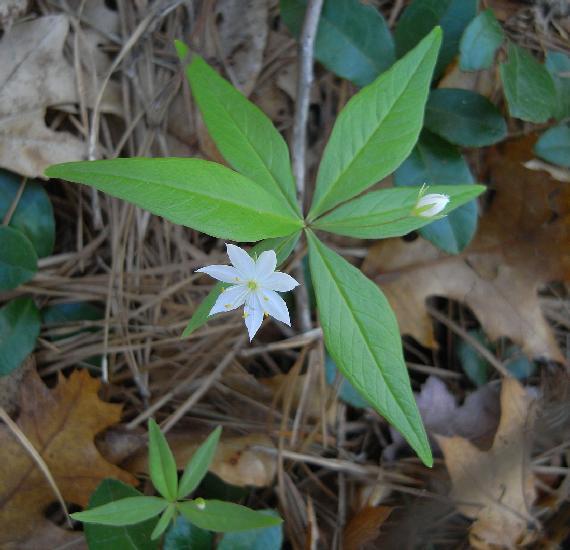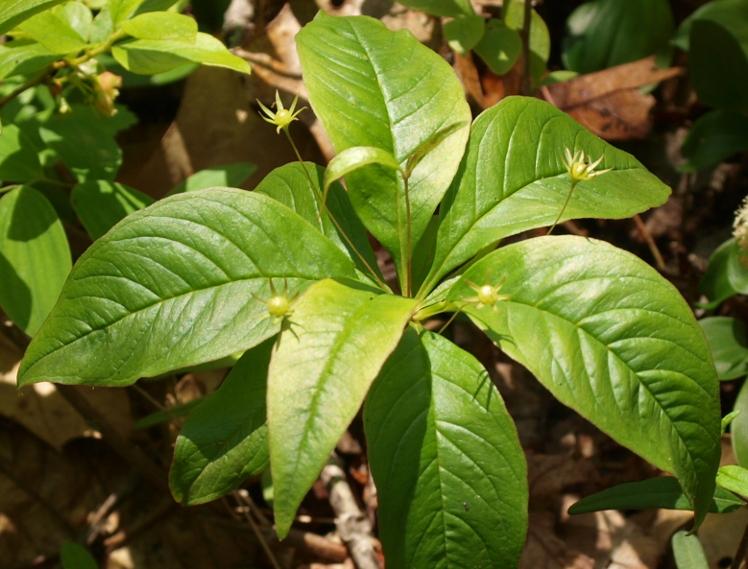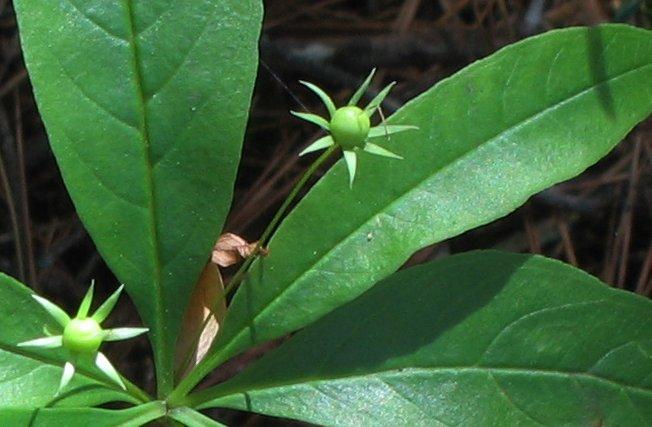Starflower
Lysimachia borealis (syn. Trientalis borealis)
Carl Linnaeus amusingly called starflower Trientalis, which means “three times oddball,” as it has unique characters among plants of the primrose family, where it belongs: 7
stamens, 7 sepals, and typically 7 petals (sometimes ranging from 5 to 9), while other members of the family have all these
parts in fives. Two delicate, 1/2-inch-wide star-shaped white flowers open above a whorl of 5-9 smooth-edged lance-shaped
leaves. So long as the weather does not get too warm, starflowers will bloom for a couple of weeks in late May to early June.
Each flower is followed by a fruit—a small green capsule, which changes to brown and eventually splits open to release the
tiny seeds. Starflower is not edible and has very limited medicinal value as well as limited known value to wildlife other
than chipmunks.

May 18, Alper Preserve, Plymouth

May 30, Allens Pond Wildlife Sanctuary, Darthmouth

June 13, Bald Hill Res., Boxford